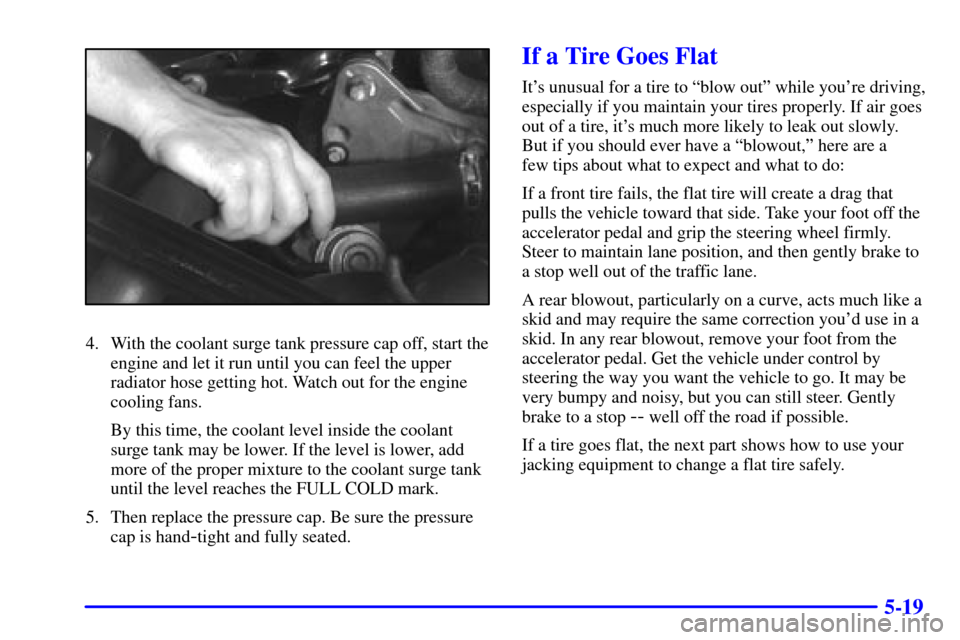5-19
4. With the coolant surge tank pressure cap off, start the
engine and let it run until you can feel the upper
radiator hose getting hot. Watch out for the engine
cooling fans.
By this time, the coolant level inside the coolant
surge tank may be lower. If the level is lower, add
more of the proper mixture to the coolant surge tank
until the level reaches the FULL COLD mark.
5. Then replace the pressure cap. Be sure the pressure
cap is hand
-tight and fully seated.
If a Tire Goes Flat
It's unusual for a tire to ªblow outº while you're driving,
especially if you maintain your tires properly. If air goes
out of a tire, it's much more likely to leak out slowly.
But if you should ever have a ªblowout,º here are a
few tips about what to expect and what to do:
If a front tire fails, the flat tire will create a drag that
pulls the vehicle toward that side. Take your foot off the
accelerator pedal and grip the steering wheel firmly.
Steer to maintain lane position, and then gently brake to
a stop well out of the traffic lane.
A rear blowout, particularly on a curve, acts much like a
skid and may require the same correction you'd use in a
skid. In any rear blowout, remove your foot from the
accelerator pedal. Get the vehicle under control by
steering the way you want the vehicle to go. It may be
very bumpy and noisy, but you can still steer. Gently
brake to a stop
-- well off the road if possible.
If a tire goes flat, the next part shows how to use your
jacking equipment to change a flat tire safely.
5-24
2. Turn the jack handle clockwise to raise the jack lift
head a few inches.
For jacking at the vehicle's front location, put the
jack lift head (C) about 8 inches (20 cm) from the
rear edge of the front wheel opening (B) or just
behind the two bolts (A) as shown.
Put the compact spare near you.
For jacking at the vehicle's rear location, put the jack
lift head (B) about 6 inches (15 cm) from the front
edge of the rear wheel opening (C) or just behind the
off
-set (A) as shown.
Put the compact spare tire near you.

